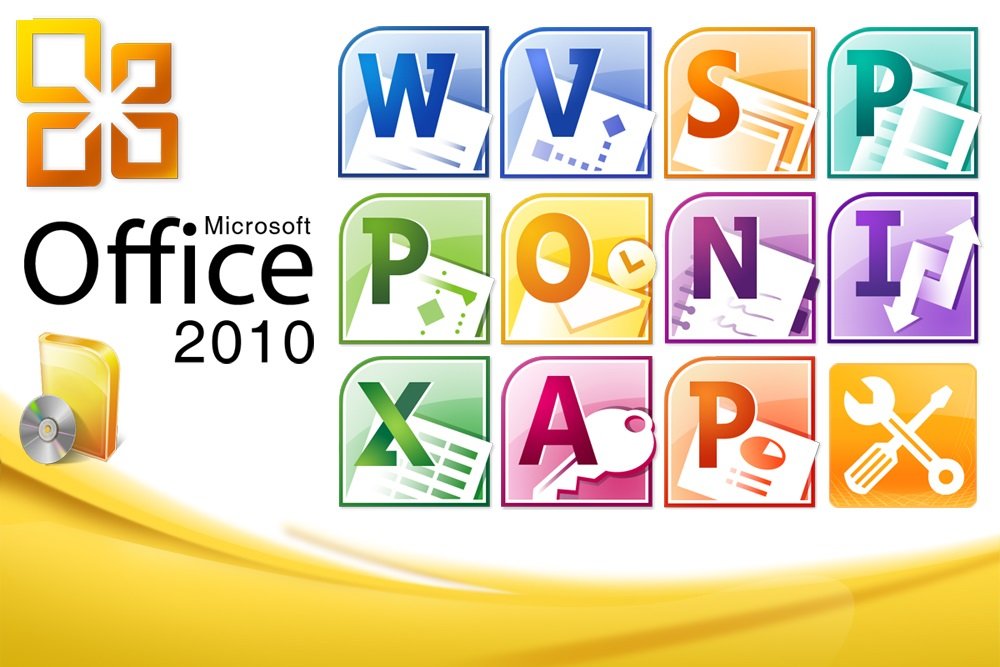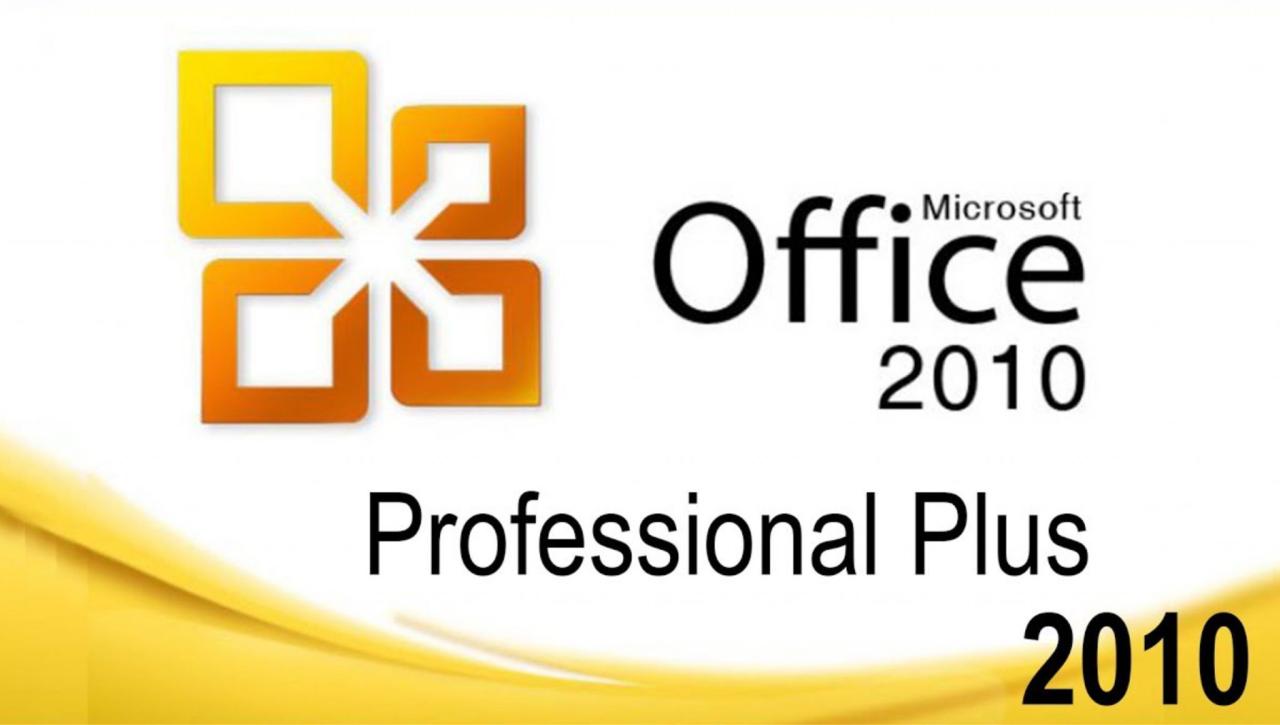Microsoft Office 2010, a suite that revolutionized productivity for millions, remains a cornerstone of many workplaces and personal workflows. Its familiar interface, robust features, and wide compatibility have cemented its legacy, making it a valuable tool for individuals and organizations alike.
Table of Contents
This guide delves into the intricacies of Microsoft Office 2010, exploring its core applications, user interface, collaboration features, security considerations, and compatibility aspects. We’ll also discuss its advantages and disadvantages, compare it to alternatives, and examine its future prospects in the ever-evolving technological landscape.
User Interface and Navigation: Microsoft Office 2010
Microsoft Office 2010 introduced a significant redesign of the user interface, with a focus on simplifying and streamlining the user experience. The most notable change was the introduction of the Ribbon interface, replacing the traditional menus and toolbars. This new approach aimed to make it easier for users to find the tools they needed and to reduce the overall complexity of the application.
The Ribbon Interface
The Ribbon interface in Microsoft Office 2010 presents a series of tabs, each containing groups of related commands and tools. This organization helps users quickly locate the features they need, as the tabs are categorized by function, such as “Home,” “Insert,” “Page Layout,” and “References.” Within each tab, groups of related commands are organized into logical categories, further simplifying navigation. For example, the “Home” tab includes groups for “Clipboard,” “Font,” “Paragraph,” and “Styles,” making it easy to access common formatting tools.
Navigation Methods and Shortcuts
Microsoft Office 2010 offers several methods for navigating within the application. The most common methods include:
- Ribbon Tabs: Users can easily navigate between different features and functionalities by clicking on the various tabs at the top of the application window. Each tab is designed to provide access to a specific set of tools and commands, such as “Home,” “Insert,” “Page Layout,” and “References.”
- Ribbon Groups: Within each tab, commands are organized into logical groups. For instance, the “Home” tab includes groups for “Clipboard,” “Font,” “Paragraph,” and “Styles.” Clicking on a group reveals a set of related commands.
- Keyboard Shortcuts: Microsoft Office 2010 provides numerous keyboard shortcuts for accessing common commands and features. These shortcuts can significantly speed up workflow and improve efficiency. For example, pressing “Ctrl + B” will bold the selected text, while “Ctrl + I” will italicize it.
- Quick Access Toolbar: Located above the Ribbon, the Quick Access Toolbar provides quick access to frequently used commands. Users can customize this toolbar by adding or removing specific commands based on their preferences.
- File Menu: The “File” menu provides access to various application-wide settings, such as creating new documents, opening existing ones, saving files, and printing. It also includes options for managing files, sharing documents, and accessing account information.
User Interface Changes from Previous Versions
The following table highlights some of the key user interface changes introduced in Microsoft Office 2010 compared to previous versions:
| Feature | Previous Versions | Office 2010 |
|---|---|---|
| Menus and Toolbars | Traditional menus and toolbars with multiple levels of submenus. | Ribbon interface with tabs, groups, and commands organized logically. |
| Navigation | Navigating through multiple menus and toolbars. | Simplified navigation through tabs, groups, and keyboard shortcuts. |
| Customization | Limited customization options for menus and toolbars. | Enhanced customization options for the Ribbon, Quick Access Toolbar, and keyboard shortcuts. |
| Visual Design | Consistent but less visually appealing interface. | Modern and visually appealing interface with a focus on clarity and usability. |
Compatibility and Legacy Support
Microsoft Office 2010, despite its age, remains a relevant software suite for many users. Its compatibility with various operating systems and hardware configurations, along with its support lifecycle, are crucial aspects to consider.
Operating System and Hardware Compatibility
Microsoft Office 2010 was designed to run on Windows operating systems, specifically Windows XP, Windows Vista, and Windows 7. It also requires a minimum hardware configuration, including a processor, RAM, and hard disk space.
While Office 2010 might run on newer operating systems, it is not officially supported and may encounter compatibility issues. For optimal performance and stability, it is recommended to use Office 2010 on the operating systems for which it was designed.
Support Lifecycle
Microsoft Office 2010 reached its end of support on October 13, 2020. This means that Microsoft no longer provides security updates, bug fixes, or technical support for Office 2010. Using Office 2010 after its end of support can expose users to security risks and vulnerabilities.
File Format Compatibility, Microsoft office 2010
Microsoft Office 2010 supports various file formats, including its own proprietary formats (.doc, .xls, .ppt) and the newer Open XML formats (.docx, .xlsx, .pptx). It also supports other file formats, such as PDF and text files.
The table below compares the file formats supported by Microsoft Office 2010 with other versions of Microsoft Office:
| Version | .doc | .docx | .xls | .xlsx | .ppt | .pptx |
|---|---|---|---|---|---|---|
| Microsoft Office 2010 | Read and write | Read and write | Read and write | Read and write | Read and write | Read and write |
| Microsoft Office 2007 | Read and write | Read and write | Read and write | Read and write | Read and write | Read and write |
| Microsoft Office 2013 | Read and write | Read and write | Read and write | Read and write | Read and write | Read and write |
| Microsoft Office 2016 | Read and write | Read and write | Read and write | Read and write | Read and write | Read and write |
| Microsoft Office 2019 | Read and write | Read and write | Read and write | Read and write | Read and write | Read and write |
Alternatives to Microsoft Office 2010

Microsoft Office 2010 was a popular office suite, but since its release, many alternatives have emerged, offering similar functionalities and features. These alternatives come in various forms, including open-source and cloud-based solutions, providing users with more options to suit their needs and budgets.
Open-Source Office Suites
Open-source office suites are free to use and modify, offering a cost-effective alternative to Microsoft Office 2010. These suites are often developed and maintained by communities of users and developers, ensuring continuous improvement and updates.
- LibreOffice is a popular open-source office suite that offers a comprehensive set of applications, including word processing, spreadsheets, presentations, and databases. It supports various file formats, including Microsoft Office formats, ensuring compatibility with existing documents. LibreOffice is available for various operating systems, including Windows, macOS, and Linux.
- Apache OpenOffice is another well-known open-source office suite. It offers a similar set of applications to LibreOffice and is known for its stability and compatibility with older operating systems. Apache OpenOffice is also available for various platforms, including Windows, macOS, and Linux.
- WPS Office is a free office suite with both free and paid versions. The free version offers basic functionalities, while the paid version provides additional features and cloud storage. WPS Office is available for Windows, macOS, and Android.
Cloud-Based Office Suites
Cloud-based office suites allow users to access their documents and applications from any device with an internet connection. These suites often offer real-time collaboration features, making them ideal for teams working remotely.
- Google Workspace (formerly G Suite) is a popular cloud-based office suite that provides a range of applications, including Gmail, Google Docs, Sheets, Slides, and Forms. Google Workspace is known for its ease of use, collaboration features, and integration with other Google services. Users can choose from different pricing plans based on their needs.
- Microsoft 365 is a subscription-based cloud service that offers access to the latest versions of Microsoft Office applications, including Word, Excel, PowerPoint, and Outlook. Microsoft 365 also includes cloud storage, collaboration features, and security tools. Users can choose from various subscription plans based on their requirements.
- Zoho Workplace is a comprehensive cloud-based office suite that offers a range of applications, including email, word processing, spreadsheets, presentations, and CRM. Zoho Workplace is known for its affordability and comprehensive suite of tools. Users can choose from different pricing plans based on their needs.
Comparative Analysis
Features and Functionalities
| Feature | LibreOffice | Apache OpenOffice | WPS Office | Google Workspace | Microsoft 365 | Zoho Workplace |
|---|---|---|---|---|---|---|
| Word Processing | Yes | Yes | Yes | Yes | Yes | Yes |
| Spreadsheets | Yes | Yes | Yes | Yes | Yes | Yes |
| Presentations | Yes | Yes | Yes | Yes | Yes | Yes |
| Databases | Yes | Yes | No | No | No | Yes |
| Collaboration Features | Limited | Limited | Limited | Excellent | Excellent | Excellent |
| Cloud Storage | No | No | Yes (Paid Version) | Yes | Yes | Yes |
Pricing
| Suite | Pricing |
|---|---|
| LibreOffice | Free |
| Apache OpenOffice | Free |
| WPS Office | Free (Basic Version), Paid (Premium Version) |
| Google Workspace | Subscription-based, Various Plans |
| Microsoft 365 | Subscription-based, Various Plans |
| Zoho Workplace | Subscription-based, Various Plans |
Pros and Cons of Using Alternatives
Open-Source Office Suites
Pros
- Free to Use: Open-source office suites are free to download and use, making them an attractive option for individuals and businesses on a budget.
- Open Source: The open-source nature of these suites allows users to access and modify the source code, making them highly customizable.
- Cross-Platform Compatibility: Open-source office suites are available for various operating systems, ensuring compatibility across different devices.
Cons
- Limited Features: Some open-source office suites may have fewer features compared to commercial alternatives.
- Less Support: Open-source office suites may have less dedicated support compared to commercial alternatives.
- Security Concerns: While open-source software is generally considered secure, there may be potential security risks associated with using less established software.
Cloud-Based Office Suites
Pros
- Accessibility: Cloud-based office suites allow users to access their documents and applications from any device with an internet connection.
- Collaboration Features: Cloud-based office suites often offer real-time collaboration features, making them ideal for teams working remotely.
- Automatic Updates: Cloud-based office suites are automatically updated, ensuring users have access to the latest features and security patches.
Cons
Final Wrap-Up

As we conclude our exploration of Microsoft Office 2010, it’s evident that this suite continues to hold a significant place in the digital world. While newer versions offer enhanced features and cloud integration, Office 2010 remains a reliable and capable option for many. Its compatibility with various operating systems, comprehensive functionalities, and established user base ensure its continued relevance. Whether you’re a seasoned user or a newcomer to the suite, understanding its nuances can empower you to leverage its full potential and achieve greater productivity.
Microsoft Office 2010 was a popular suite of productivity tools, but it lacked the advanced capabilities for creating 3D models. For those needing to design in 3D, specialized software like 3d cad is essential. While Microsoft Office 2010 excelled in tasks like word processing and spreadsheets, it wasn’t equipped to handle the complex geometries and simulations required for 3D design.
